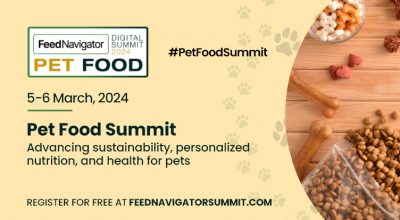EU feed and pet food sectors concerned about use of fit-for-feed animal fat in biofuels

Even though category 3 animal fats are not mentioned in Annex IX of the Renewable Energy Directive (RED) as feedstocks for sustainable biofuels, they are increasingly being used and marketed as such, said Alice Tempel Costa, technical director, FEDIAF.
Data from EFPRA, the group representing the European animal by-product processing sector, shows that the demand for animal fats category 3 for biofuel production grew more than 80% between 2018 and 2020.
Animal fat appeals to the biofuel industry because of its compatibility with diesel engines, noted the pet food organization.
Sustainable maritime fuels proposal
FEDIAF, along with FEFAC, and oleochemical industry representatives, APAG, have been sounding the alarm bell for the last two years about the potential side effects of the FuelEU Maritime Regulation proposal, which is aimed at boosting the transition towards sustainable maritime fuels.
Following an announcement late last month that the EU Parliament and the Council of EU had reached agreement on the proposal, the trade groups now believe that category 3 animal fat supply for their sectors is under further threat.
While efforts to decarbonize the shipping sector are welcome, they should not put other sectors at risk, said the associations. The biofuel sector needs to decarbonize on waste-based biofuel feedstocks; category 3 animal fats are not waste, they added.
Such rendering by-products have many functions in feed, providing a source of energy and palatability, as well as being a critical source of essential fatty acids. Category 3 animal fats are also difficult to replace with any other commodity as widely available, or as sustainable, stressed the organizations.
The declining rate of meat consumption in Europe and the projection that it will only continue to decrease will further impact the availability of such fats for feed and pet food application, reported Tempel Costa.
And animal fats from outside of Europe cannot always be used by the EU feed, pet food and oleochemical sectors due to stringent sanitary rules regarding animal by-products.
Legislative amendment
There is no protection in the Renewable Energy Directive (RED) for category 3 fats, said Tempel Costa. More explicit language around the use of that raw material is needed, she maintains.
FEDIAF is now advocating at the national level, as RED II is being transposed, to have wording included in the legislative text clearly stating that the cascading principle and the EU waste hierarchy approach should be applied to category 3 fats, in the same way that those instruments are applied to food crops and biomass, she told us. “This work is only getting underway; we are actively engaging with stakeholders.”
When the waste hierarchy approach is being followed, use as food has the highest priority, followed by use in animal nutrition and, only, when there is no need or it is not suitable for use in food or feed, other uses like production of biofuel follow.











